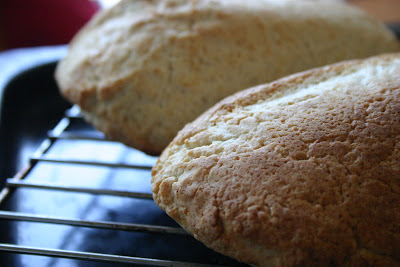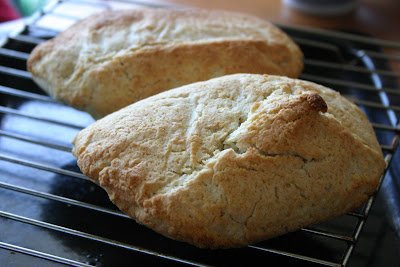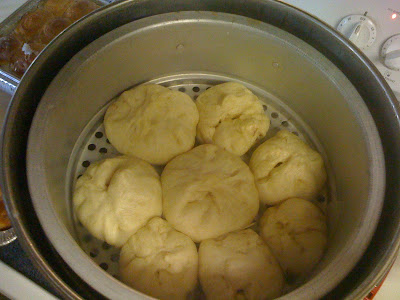Traditionally, fa'apapa are wrapped in leaves and thrown in the umu along with everything else. In the modern kitchen, some people use well-greased aluminium foil, which allows the fa'apapa to steam/bake just like it would in an umu. However, I prefer to use baking paper because it results in a firmer, evenly browned crust, and I don't have to peel off bits of foil where it sticks to the fa'apapa.

When you're making fa'apapa, it's best to have your coconut milk at liquid temperature. If it's solidified, it makes it harder to mix in with the flour and you might end up with tough fa'apapa. Simply put your coconut milk in the microwave for a few seconds to melt it into its liquid state, but be careful not to heat it. As always, you're going to get a much richer flavour from fresh coconut milk versus the canned stuff.
Oh and just for the record, fa'apapa does not mean bread. To fa'apapa something is to flatten it. In cooking, it means to wrap something into flat parcels and bake in an umu (Samoan oven). Although I have absolutely no proof of it, my theory is that the verb fa'apapa was originally applied to this bread because of its form and cooking method, and over time fa'apapa became the general term for this kind of baked good.
Fa'apapa can be made with coconut, pumpkin, taro, and banana, but there might be other kinds out there that I haven't tasted. The following variation is one of my favorites.









